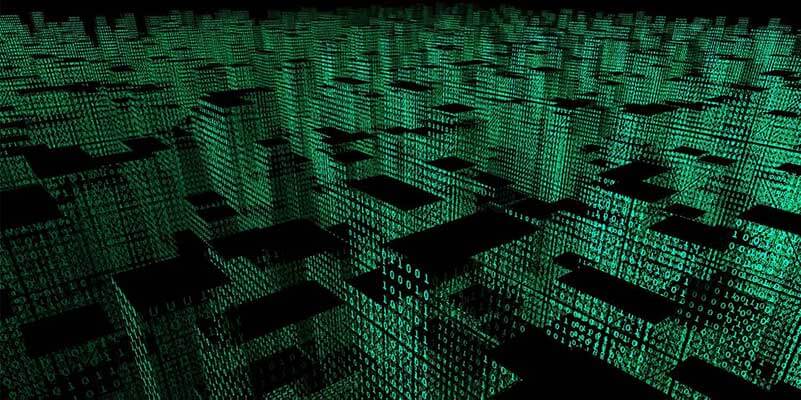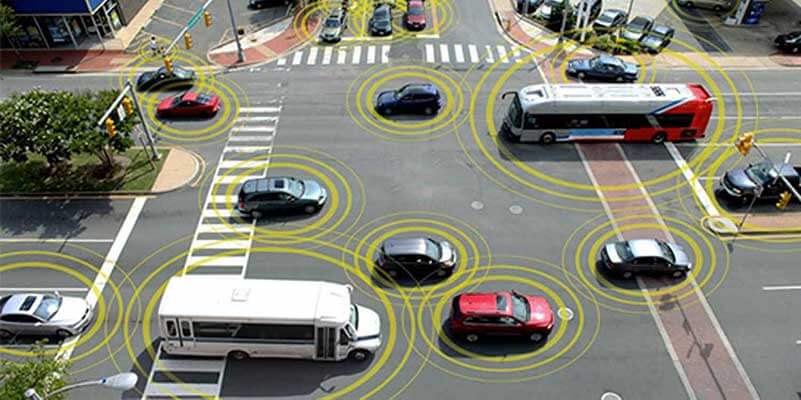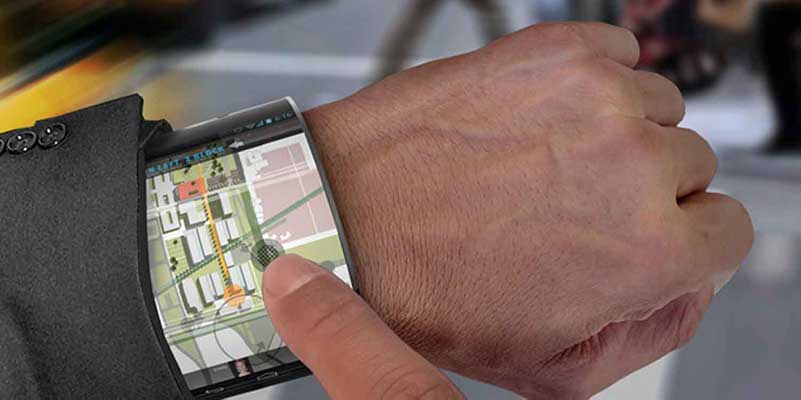- Smart cities and big data
- Internet of Things connecting cities
- Robots and self-driving cars!
- Smart cities – a boost for wearable tech
- Future of government smart toolbox
Urban environment is what most people strive for these days – better jobs, better life, and opportunities. Smart cities are going to be a brand new world, connecting all devices with the Internet of Things (IoT), managing traffic, residential buildings and offices, as well as retail spaces and even schools! Imagine a completely smart city with devices and sensors in every public object – traffic lights sending messages to cars, and cars transmitting to public transport, where driverless cars will move around and make car accidents minimal. Urban structures will contain several new solutions determined to enhance residential experience, and help pedestrians to be more effective in doing their daily chores, going to work, or just shopping at the mall. Not only static objects will become connected but we will also drive in automated robot cars in a city that lives on its own. Local municipalities will use RFID tagging for easier parking and wearables will drive all this data and help governments analyze best possible solutions through big data.
Governments are going to use more and more technological trends to achieve better results and be more connected with the citizens. This will be done through online offices, voting, and meetings of the officials, while big data will become the basis for predictive analysis, offering a major overview of what happened, how it might unravel, and what is the general possibility of events happening in the future. Pedestrians will have wearables that will connect them to their bank accounts, measure their health and fitness, and send details to hospitals and other emergency agencies! Cities will be alive and breathing through a grid of connected devices, centralized to make everything easily reachable to everyone in it – machines as well as humans. Is this going to invade privacy on a higher level? This remains to be seen, because with new possibilities come new responsibilities and dangers. Whatever happens, we cannot avoid these emerging trends which are coming together in one whole. Positives are overcoming negatives, and whether we want it or not, we will have to cope with the wave of being connected, because it will affect us even if we would ignore it completely. Connected cities are the future.
Smart cities and big data
Data explosion will improve our cities. Better efficiency of police and fire services by capturing and correlating all the data coming from different systems installed in the city, including surveillance cameras, emergency vehicle GPS tracking, and fire and smoke sensors, is what we can expect to see in the coming years. Are city officials going to predict protests organized on social networks, and thus facilitate the management of potential traffic jams by changing bus routes or the like? Running the world is expensive. With new technologies, it can become more cost-efficient. Smart cities will capitalize on predictive analysis, because it will generate new insights to transform their systems, and categorization of mass volume of data will ultimately create an excellent overview of whatever we can do to improve functioning of the city itself. This will especially help governments to keep track of what is possible to do in certain sectors or how to actually assist the citizens. Imagine analyzing the data coming from metering systems, pressure or PH sensors installed in water supply networks, and video cameras situated in water treatment plants? It would be possible to optimize water management by detecting leaks, reducing water consumption, and mitigating sewer overflow!
With all the data coming from smart electric meters installed in customers’ homes as well as meteorological open data platforms, we could optimize energy production, depending on demand, which would then help us to maximize the integration of renewable energy resources such as wind and solar energy! This is a clear preview of how big data will ensure we can analyze and be informed of whatever problems occur that directly affect pedestrians, thus having time to react properly and on schedule. Mass of data is always good – we just have to properly categorize and analyze it.

Internet of Things connecting cities
IoT is set to lead a sweeping cultural change as a huge number of machines, devices, sensors, actuators, and other objects become interconnected to each other and to higher-level systems. It will present market opportunities as well as make citizens’ lives smarter! Analyzing the sound from traffic cameras to listen to car accidents, predicting when to alarm emergency services, and smart parking lots are just few of the innovations that are coming soon! Would you like to go to a parking lot which is located in the center of the city and shows you exactly where a free spot is available for you to park? No traffic jams, and perfect setup of public transport? Connected homes with smart meters and smart grid electricity will be a dawn of a new tomorrow, a sci-fi reality that is coming very soon to your city! In the long run, a truly smart city will interconnect systems and offer multiple ways for you to interact with them. We will see smart bus stops connected to the city’s fiber network. They will display real-time bus timetables, tourist information, and digital advertising, while also acting as free Wi-Fi hotspots, allowing people to connect to the Internet using their mobile devices while waiting for a bus. The real promise of a smart city is connecting every device in it to suit our needs.

Robots and self-driving cars!
Prototypes of driverless cars are already on the roads. Google, Audi, and Mercedes are leading the pack, and it is just a question of time when we are going to experience it firsthand! Automated cars will take us anywhere, without us steering the wheel. It does sound a bit scary, trusting your life to a machine, but isn’t it intriguing to be driven anywhere without a driver? A perfect system would make traffic jams and car accidents obsolete! Once they become commercial, we are going to see fully automated traffic with cars driving people anywhere in the city without them controlling it! Robots in a smart city are not just driverless cars but also clerks in banks, and workers in hospitals, info desks, or malls. Robots will become new participants of our everyday rush hour and we will have to get used to it. Robots can do a lot of human work much more effectively than a human being and are less prone to flaws that we as mankind usually have! It does sound like sci-fi as of now but it is very much real and not too far away from our city.
More and more RFID implementations have been cropping up at the regional and local levels in the past few years. Municipalities are trying to reduce costs by increasing efficiency so as to improve services for citizens! Quite soon, we are going to experience sensor navigated parking lots and street lights shining brighter when pedestrians walk by! Some cities are already trying out these new improvements and it looks like the quality of life with RFID and sensors is getting better. All of the city’s sensors will be linked to a central command & control center. Relevant data will be also sent to applications running on residents’ smartphones. The apps will present real-time information on bus delays, road closures, and the current pollen count! Residents can also feed their own data into the system. Are we going to get used to new sophisticated citizen-oriented services and high-tech technologies becoming a part of our everyday city life?
Smart cities – a boost for wearable tech
As it is clear, connected cities are the future. Within them, we will have connected citizens. How will this be achieved? Wearables are the most prominent way of connecting people in a city. Wristbands, clothing, watches, and every other wearable have a lot of potential for pedestrians in many of their daily activities! Fitness tracking, mobile payments, parking sensors, health management, and so much more! The world is changing. A new urban migration is underway and cities will be the places where ideas, infrastructure, and technology intersect. Wearables will be a major part of it. Everyone will use them to access their bank account, run and track health, reach their doctors, or just communicate with friends. Being connected all the time, especially in an urban atmosphere, helps citizens do things they always needed to be done quickly. You will not have to waste hours in traffic jam or public transportation just to go to the university or visit some service. Everything will be reachable virtually and time will be spent more effectively!

Future of government smart toolbox
Governments invest a lot in technology, and Smart Toolbox is a way of them taking control and helping citizens move forward, making the right decisions for the betterment of society. Online offices will make officials reachable to citizens, making their relationship more personal, also helping pedestrians in getting involved more into making decisions. Big data predictive analysis, robots in city halls, wearables connecting governmental officials, and many such things to come will make old-school governments obsolete! Governments have to be constantly innovative in delivering services and look for creative solutions to meet the needs of customers in all circumstances and areas; for example, e-governance to streamline cabinet meetings. Besides contributing to the environment by going paperless, this actually helps to improve the decision making process and make better use of the time at the meetings! It will all be faster and more productive. Would you like your Major to be “connected”?
Share via:

